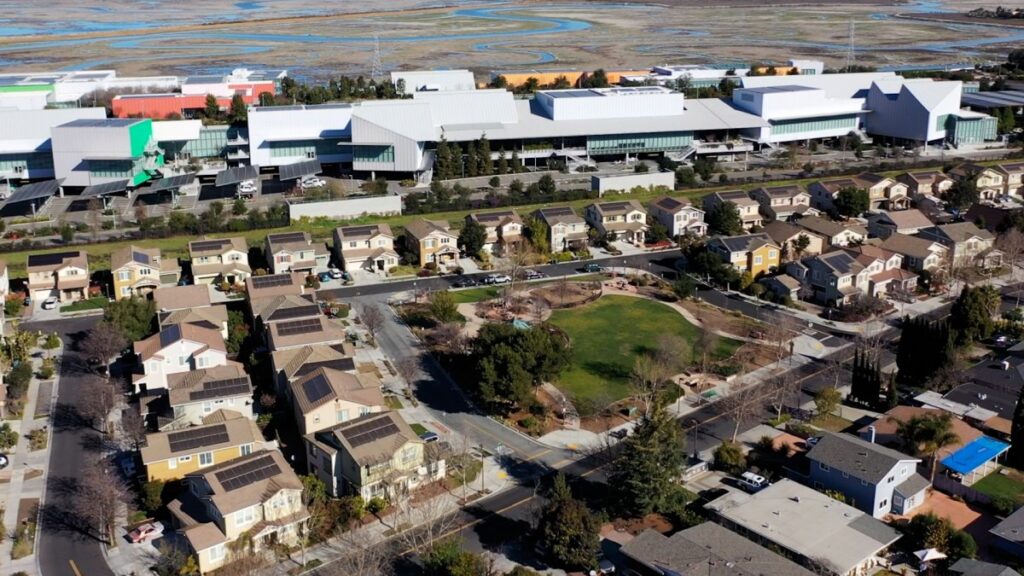Rising Seas Could Raise Insurance Rates of Those Living Near Water – NBC Bay Area

In one of the biggest changes in the history of flood insurance, climate change will now likely drive homeowner rates for higher flood insurance. FEMA, the Federal Emergency Management Agency, has now updated a program that first started in 1968, which does away with a one-size-fits-all model for gauging the threat of flooding in communities.
Using new modeling, the agency developed “Risk Rating System 2.0,” which will assess individual homeowners who live near water higher premiums based on their actual risk, and climate change will be a factor.
Meanwhile, new data from graduate researcher engineers at UC Davis show Californians paid more than $5 Billion into flood insurance than those homeowners received back in payments for claims. That has prompted one researcher to suggest the state should walk away from the National Flood Insurance Program.
FEMA officials tell NBC Bay Area that the new Risk Rating 2.0 also takes into consideration sea level rise and climate change.
“Technically speaking, it is not currently built into the mapping process,” said Edie Lohmann, National Flood Insurance specialist for FEMA region 9 which oversees operations in 9 states and territories, including California, Arizona, Nevada and Hawaii. “However, we would be remiss as emergency managers if we weren’t looking at climate change as a challenge going forward and something that we need to definitely account for as we continue in in the program.”
That fact, analysts say, will mean sticker shock for some homeowners.
“It doesn’t matter if you don’t believe in climate change, your insurance company does,” said Nick VinZant, Senior Research Analyst for QuoteWizard, a subsidiary of the online mortgage company Lending Tree.
Back in 2007 when Claudia Solis and her husband bought their home in Menlo Park, within sight of Facebook and San Francisco Bay, their developer told them they wouldn’t need flood insurance.
“They advised us that the house had been elevated to a specific height, or high enough that flood insurance was not required,” said Solis. That’s why a 2019 letter from FEMA informing them they now had to purchase flood insurance came as a total shock.
“I was trying to understand how it was possible that there was no need for us to have flood insurance in the past,” said Solis, “and how is it possible all of a sudden it changed?”
Now, Solis said, she might have to pay as much as $2,200 a year in flood insurance.
Under FEMA’s new Risk Rating 2.0 calculations Solis and many of her neighbors, who never needed to buy flood insurance in the past, suddenly have to pay for policies, according to FEMA’s new flood maps.
“If you live near water, you are going to see your flood insurance go up,” said Nick VinZant, from QuoteWizard.
VinZant describes his company as the “Expedia or Priceline” of insurance companies. QuoteWizard reviews insurance rates across the country and offers customers a portal where they can compare prices.
“Essentially, what FEMA is doing, they are changing the way that flood insurance is priced and regulated and they’re doing that because of climate change,” said VinZant, pointing out that rising sea levels could drive flood insurance rates sky high for some homeowners.
“In the past, flood insurance was simply based on where your home was located (in a particular flood zone) and how large it was,” said VinZant. “Your flood insurance is now going to be based off the (specific) risk that your home is facing and the cost of replacing it instead of just how big your home is and where it is.”
VinZant’s team estimates that because of rising sea levels, 3.85 Million homeowners around the United States, including 157,288 in California and 31,016 living in the Bay Area will see their flood insurance rates go up.
In the San Francisco Bay Area that means 3 out of every 4 property owners who hold flood insurance could see their rates rise anywhere from $10 to more than $100 a month. His team estimates 1,163 homeowners in the Bay Area will see their insurance go up $30 or more a month.
“One of the goals of the rating system, the new rating system, is to make sure there’s equity in the rates, and that people understand why they need flood insurance,” said FEMA’s Lohmann.
Up until this new Risk Rating 2.0, FEMA assigned fixed rates for homes that were in flood zones, which sometimes meant owners of smaller properties were subsidizing beach front mansions. And homes built at higher elevations often had to pay for flood insurance even though they weren’t at risk, because the rest of their neighborhood was in a FEMA flood zone.
Now, FEMA is using new modeling data to determine the risk of a specific home. That means high risk homes near the water will now be charged based on their actual risk. That will include climate change data, which show an accelerating trend of flooding events across the country.
A recently released report by NOAA, the National Oceanographic and Atmospheric Administration, predicts that by the year 2050, there will be about ten times as many damaging floods as there are now. (See the latest NOAA report: 2022 Sea Level Rise Technical Report (noaa.gov)
Lohmann explained how the new rating system evaluates the flood risk.
“We’re looking at the building’s distance to the flooding source. We’re looking at what type of a flooding source is it? Is there more than one flooding source? How big is the flooding source? What is the flooding source? How high is this building elevated on the natural grade? What is the replacement cost of the building? All of those play into what that premium is going to be and what that risk is at that particular property,” Lohmann told NBC Bay Area.
See FEMA’s site for more detail on Risk Rating 2.0.
But the new risk rating still doesn’t satisfy critics such as Kathy Schaefer who worked for FEMA for more than a decade before retiring.
“There are opportunities to be more creative with how we live with flood risk in the future,” said Schaefer, who is now working on a PhD thesis on flood insurance at UC Davis.
Schaefer said her research revealed that between 2012 and 2016 California residents paid $963,400,000 in premiums to the National Flood Insurance Program (NFIP) and received $20,835,233 payments.
And a report from the Congressional Budget Office (CBO) backs that data up.
“Some people pay much more than what they should,” said Schaefer, pointing to the difference between California premiums and claims of nearly a billion dollars, as well as the fact that 80% of the NFIP claims are paid out to the hurricane-riddled counties along the Gulf of Mexico in Texas, Louisiana and Florida. (CBO Report)
While most people are accustomed to paying into insurance and not filing claims, Schaefer is convinced that the current system is short-changing California. “Over the long term, you should kind of equal out” she said, “That’s kind of why we have discounts for older drivers and people who are younger drivers pay more.”
“I think there’s an opportunity to keep the funds here in California,” said Schaefer.
As such, Schaefer proposes that California residents walk away from the NFIP to start their own community-based plans.
Schaefer believes that by doing that, residents could buy cheaper flood insurance through private global insurance companies. They could then use the dollars saved to invest in local flood protection. That would include everything from installing tile floors and water-resistant wall board to building sea walls and levees to directly protect their community.
Schaefer’s proposal is still an idea and an academic exercise. Isleton, California, a community of about 500 residents, is interested in exploring the option of pulling out of the NFIP and implementing the community-based approach Schaefer suggests. Residents there pay an average of $1100 per year in flood insurance.
When asked if leaving the NFIP was a good idea, FEMA’s Edie Lohmann said, “Well, I work for FEMA’s National Flood Insurance Program, so of course I’m going to not recommend that as an option,” adding, “it does flood here (in California) and people should be concerned. And they should have a conversation with their insurance agent about what the risk is.”
Lohmann admits the National Flood Insurance Program has a long history of inequity and fairness issues and says the new “Risk Rating 2.0” aims to correct that.
Officials in Menlo Park, where Claudia Solis lives, said they want all residents to prepare for what’s coming even if that means paying more in homeowners’ insurance.
“Sea level rise is a huge issue for us in Menlo Park,” said Mayor Betsy Nash. “We have about 7,000 residents in the area which is affected by sea level rise. And we are constantly trying to do everything we can to mitigate the climate change. It definitely affects our residents very differently depending on where (exactly) they live.”
“In terms of one of the things that we’re doing directly to try to help residents. We’ve recently enrolled, we’re certified by FEMA and their Community Rating System program,” said Menlo Park Public Works Director Nicole Nagaya. “So that helps provide discounts for flood insurance. Right now, we’re at what FEMA considers a Level eight, so that provides a 10 percent discount for residents directly off their premiums. So, I know that’s just a drop in the bucket, but trying to to help reduce the cost for folks in the program.”
As for the impact of Risk Rating 2.0 directly on Menlo Park residents Nagaya said the impact is mixed for those already paying for flood insurance.
“We (believe) about 40 percent are expected to see a decrease in their premiums and then about 50 percent are slated to see less than a ten-dollar adjusted increase in their premiums,” said Nagaya. “Then the remainder (of residents currently paying for flood insurance) about 10 percent we’re expecting (they will) see a more substantial increase (in their insurance.)”
This content was originally published here.




Responses